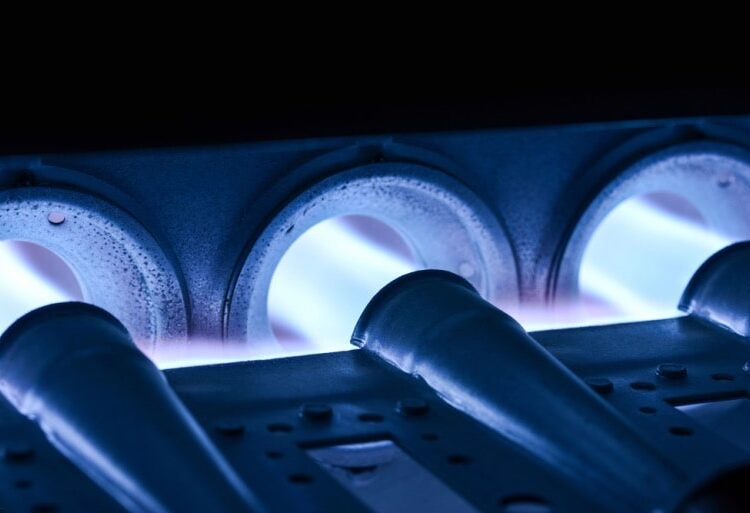Maintaining a furnace is essential for the efficient, safe, and long-lasting operation of your heating system. Regular maintenance not only improves the performance of your furnace but also helps you avoid costly repairs and prolong its lifespan.
While professional maintenance is recommended annually, there are several tasks you can do yourself to keep your furnace in top shape. This complete DIY checklist of furnace maintenance in Cincinnati will guide you through the steps needed to optimize your heating system’s performance.
1. Safety First: Turn Off Power
Before performing any furnace maintenance in Cincinnati, Ohio, always prioritize safety. Start by switching off the power supply to the furnace to prevent accidental activation during your work. Locate the power switch or circuit breaker for your furnace and turn it off.
2. Replace Air Filters Regularly
One of the simplest yet most crucial tasks in maintaining a furnace is regularly changing the air filters. Clogged or dirty filters can impede airflow, increase energy consumption, and strain the operation of your entire heating system. Inspect your filters monthly and replace them every three months or as recommended by the manufacturer.
3. Clean Vents and Registers
To ensure optimal airflow throughout your home, clean all vents and registers regularly. Use a vacuum cleaner with a brush attachment to remove dust, pet hair, and other debris that might accumulate over time.
4. Check Thermostat Operation
Next on our checklist is checking proper thermostat operation. Test each setting – heat mode, cool mode (if applicable), and fan settings – to make sure they function correctly. If you have a programmable thermostat, take this opportunity to adjust or reprogram it according to your current heating needs.
5. Inspect Electrical Wiring
Well-maintained electrical connections are critical for avoiding fire hazards and ensuring the proper functioning of your furnace. Examine all electrical wiring connections for signs of damage or wear, such as frayed wires or loose connections; if you identify any issues, contact a professional for assistance.
6. Lubricate Moving Parts
Many furnaces have moving parts that require regular lubrication to minimize friction and ensure smooth operation. Refer to your furnace manufacturer’s instructions to identify the specific components that need lubrication and use the recommended lubricant.
7. Check and Clean the Blower Assembly
The blower assembly is responsible for efficiently distributing heated air throughout your home. Visually inspect it for any signs of dirt, dust, or debris accumulation; if necessary, clean it using a brush or soft cloth. Pay close attention to the blower blades while cleaning to ensure they are free from obstruction.
8. Inspect and Clear Condensate Drain
If your furnace has an efficient condensing system, check its condensate drain regularly. Over time, debris may build up and cause clogging, hindering effective moisture drainage. If you notice any blockages, gently clear them using a small wire brush or distilled vinegar solution.
9. Test Safety Controls
To guarantee the safe functioning of your furnace, periodically test its safety controls. Follow the manufacturer’s instructions to run tests on the limit switch (which prevents overheating) and other safety features present in your specific furnace model.
10. Vacuum Burners and Heat Exchanger
Dirt or soot buildup on burners and heat exchangers can reduce efficiency and increase the risk of malfunctions or carbon monoxide leaks. Carefully vacuum these areas to remove dust buildup without damaging any components; if you find heavier soot deposits or signs of damage, consult a professional technician.
11. Inspect and Clean Air Ducts
Over time, dust, debris, and allergens can accumulate in your home’s air ducts, obstructing airflow and reducing the efficiency of your furnace. Regularly inspect the air ducts for any signs of dirt or blockages. If you notice significant buildup or suspect mold growth, it may be necessary to hire a professional duct cleaning service.
12. Check Carbon Monoxide Detectors
Carbon monoxide (CO) leaks can be dangerous and even fatal. Ensure that you have functioning carbon monoxide detectors installed near your furnace and regularly check their batteries. Test these alarms according to manufacturer instructions to ensure they’re working properly and providing adequate protection for your household.
Conclusion
By following this complete DIY furnace maintenance checklist regularly, you can ensure the optimal functioning of your heating system while saving money on repairs in the long run.
However, remember that professional maintenance is still important on an annual basis to address any complex issues and keep your furnace running at its best performance level. Stay proactive with maintenance tasks and enjoy a cozy, comfortable home throughout the colder months.




